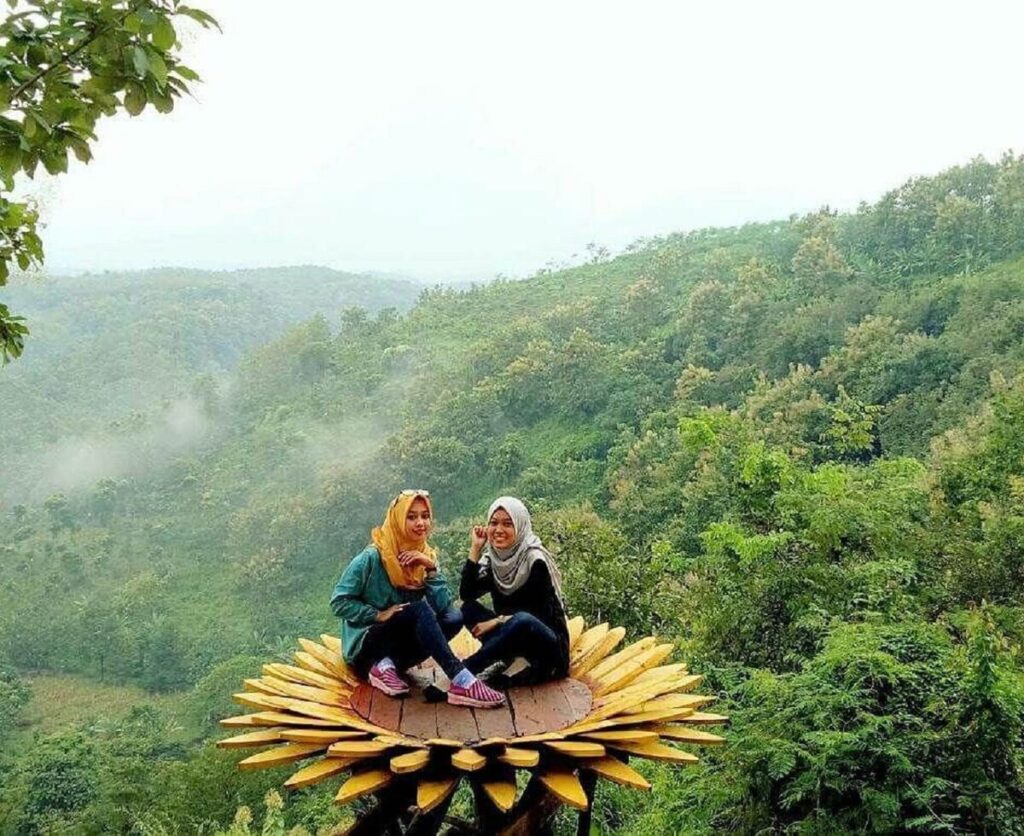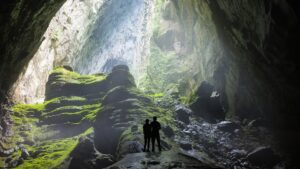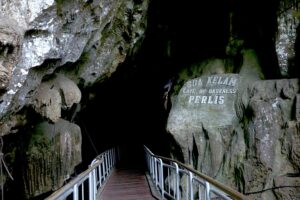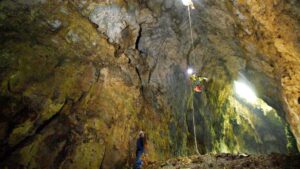Exploring the Unique Gua Jepang Jombang: A Cultural Landmark

Nestled within the lush landscapes of East Java, Gua Jepang Jombang stands as a testament to the region’s rich history and natural beauty. This historic cave, known locally as the Japanese Cave, offers visitors a unique glimpse into wartime past and geological marvels. As a site of both cultural significance and natural intrigue, Gua Jepang continues to attract explorers, historians, and nature enthusiasts alike. In this article, we will explore the cave’s overview, location, geological features, historical background, visitor information, conservation efforts, cultural legends, practical tips, and nearby attractions, providing a comprehensive guide for those interested in uncovering its secrets.
Overview of Gua Jepang Jombang and Its Historical Significance
Gua Jepang Jombang is a historic cave that served as a strategic military site during the Japanese occupation of Indonesia in World War II. Carved into the limestone hills, the cave complex was used by Japanese forces as a defensive position, storage facility, and shelter for soldiers. Its significance extends beyond its military history, symbolizing a period of hardship and resilience for local communities. Today, the site is preserved as a cultural heritage monument, offering insights into Indonesia’s wartime history and the impact of Japanese occupation on local society. The cave’s labyrinthine passages and remnants of wartime installations serve as poignant reminders of a turbulent era, making it an important educational resource for visitors and historians alike.
Location and Accessibility of Gua Jepang in Jombang
Gua Jepang is situated in the Jombang Regency of East Java, approximately 10 kilometers from the town center. The site is accessible via well-maintained roads, making it reachable by private vehicle, motorcycle, or local transportation such as angkot (shared minivans). For visitors coming from larger cities like Surabaya or Malang, the journey typically takes around 2 to 3 hours. The surrounding area is characterized by scenic rural landscapes, rice fields, and small villages, providing a peaceful environment for exploration. Signage and local guides often assist visitors in locating the entrance, which is discreetly nestled within the hills. Due to its semi-remote location, it is recommended to plan ahead and confirm transportation options prior to visiting.
Geological Features and Natural Formations of Gua Jepang
The cave’s geological makeup is primarily limestone, formed over millions of years through sedimentation and mineral deposits. Its natural formations include stalactites, stalagmites, and intricate rock formations that have developed over centuries. The interior of Gua Jepang features narrow tunnels, spacious chambers, and natural skylights that allow sunlight to filter through, illuminating parts of the cave. The mineral-rich environment has resulted in striking mineral deposits that create shimmering surfaces and unique textures on the cave walls. The natural formations not only add to the cave’s aesthetic appeal but also provide valuable insights into the region’s geological history, showcasing the dynamic processes that shaped the landscape over geological timescales.
Historical Background and Role During World War II
During World War II, Gua Jepang served as a crucial military outpost for Japanese forces occupying Indonesia. The Japanese military fortified the cave with makeshift defenses, storing weapons, ammunition, and supplies within its chambers. It also functioned as a hideout and command post during local resistance activities. The strategic location of the cave allowed Japanese troops to monitor surrounding areas and control access routes. After the war, the site was abandoned and gradually fell into disrepair, but remains a powerful historical symbol. Excavations and research have uncovered artifacts and remnants of wartime installations, shedding light on the operational aspects of Japanese military strategies in the region. The cave’s historical role underscores its importance as a site of remembrance and education about Indonesia’s wartime experiences.
Visiting Hours and Best Times to Explore Gua Jepang
Gua Jepang is generally open to visitors from early morning until late afternoon, with typical visiting hours from 8:00 AM to 4:00 PM. It is advisable to check with local authorities or guides for any seasonal or special closures. The best time to visit is during the dry season, from May to September, when weather conditions are more favorable for exploring the outdoor surroundings and interior of the cave. Visiting during weekdays can also mean fewer crowds, allowing for a more contemplative experience. Early mornings or late afternoons provide softer lighting inside the cave and cooler temperatures, enhancing the overall experience. Regardless of the time, visitors should be prepared for uneven terrain and variable lighting conditions inside the cave.
Guided Tours and Educational Programs Available at the Site
To enhance the visitor experience, guided tours are often available at Gua Jepang, led by knowledgeable local guides familiar with the site’s history and geology. These tours typically include a detailed explanation of the cave’s wartime role, geological features, and preservation efforts. Educational programs, especially for school groups and history enthusiasts, focus on Indonesia’s wartime history and the significance of the cave as a cultural heritage site. Some programs also include interactive activities, such as artifact displays and storytelling sessions. Arranging a guided tour in advance can provide deeper insights and ensure a safe exploration of the complex. These educational initiatives aim to promote awareness and appreciation of the site’s historical and natural importance for future generations.
Conservation Efforts and Preservation of Gua Jepang
Efforts to conserve Gua Jepang are coordinated by local heritage and environmental agencies, emphasizing the protection of its geological formations and historical artifacts. Preservation activities include stabilizing the cave structure, preventing illegal graffiti, and maintaining pathways to reduce erosion. Educational campaigns promote responsible tourism, encouraging visitors to avoid damaging formations or leaving litter inside the cave. Ongoing research and excavation projects aim to document and preserve artifacts, while community engagement programs involve local residents in conservation activities. Recognizing the cave’s cultural and historical significance, authorities work to balance tourism with preservation, ensuring that Gua Jepang remains an educational and cultural resource for generations to come.
Local Legends and Cultural Significance of the Cave
Local legends surrounding Gua Jepang often speak of spirits and ancestral guardians believed to inhabit the cave, reflecting its deep cultural roots in the community. Some stories recount encounters with spirits of soldiers who once used the cave, serving as protectors or messengers. The site is also associated with tales of resistance and bravery, symbolizing the resilience of local communities during difficult times. Cultural events and ceremonies are occasionally held at the site, honoring ancestors and commemorating those who fought during wartime. The cave’s significance extends beyond its historical role, embodying collective memory and identity for the residents of Jombang and surrounding areas. These legends and cultural practices enrich the visitor experience, connecting history with spiritual and cultural traditions.
Tips for Visitors: What to Bring and How to Prepare
Visitors planning to explore Gua Jepang should wear comfortable, sturdy footwear suitable for uneven terrain and rocky surfaces. Bringing a flashlight or headlamp is recommended, especially for darker passages within the cave. Dress appropriately for the weather, as interior temperatures can be cool, and outdoor conditions may vary. Carrying bottled water, insect repellent, and a small first aid kit is advisable. It’s also helpful to bring a camera for capturing the natural formations and historical remnants, but visitors should respect the site by avoiding touching or damaging delicate structures. Planning ahead by checking weather forecasts, arranging transportation, and booking guided tours can ensure a smooth visit. Respect for the site’s cultural and natural significance is essential, so visitors are encouraged to follow guidelines and leave no trace of their visit.
Nearby Attractions and Accommodations in Jombang Area
Jombang offers a variety of attractions for those interested in exploring beyond Gua Jepang. Nearby sites include the historic Pondok Pesantren Tebuireng, one of Indonesia’s most renowned Islamic boarding schools, and the lush landscapes of the surrounding countryside. Visitors can also explore local markets, traditional villages, and scenic rice terraces. For accommodations, Jombang provides options ranging from modest guesthouses to more comfortable hotels, catering to different budgets and preferences. Many lodgings are conveniently located within a short drive from the cave, offering easy access for day trips. Dining options include local eateries serving traditional East Javanese cuisine, allowing visitors to enjoy authentic flavors after their explorations. Combining cultural, historical, and natural experiences, the Jombang area offers a well-rounded visit for travelers seeking a deeper understanding of the region.
Gua Jepang Jombang stands as a compelling site that melds natural beauty with profound historical significance. Its geological formations and wartime history offer a rich narrative for visitors, while ongoing conservation efforts ensure its preservation for future generations. Whether exploring its dark passages, learning about its past, or enjoying the surrounding attractions, visitors can gain a deeper appreciation of Indonesia’s complex history and vibrant culture. With proper preparation and respect, a visit to Gua Jepang promises an enlightening and memorable experience that honors the resilience and heritage of the local community.



